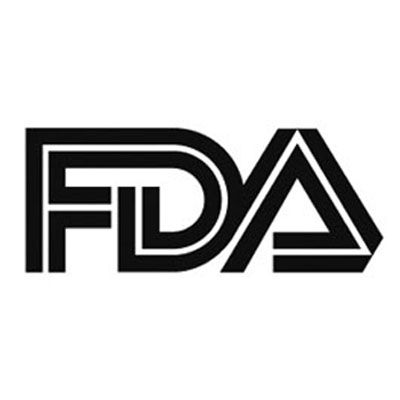Durvalumab sBLA Granted Priority Review by the FDA
A supplemental Biologics License Application for durvalumab has been accepted by the FDA, and the drug has been granted priority review for the treatment of previously untreated extensive-stage small cell lung cancer, according to a press release from AstraZeneca.

A supplemental Biologics License Application (sBLA) for durvalumab (Imfinzi) has been accepted by the FDA, and the drug has been granted priority review for the treatment of previously untreated extensive-stage small cell lung cancer (ES-SCLC), according to a press release from AstraZeneca.1
The sBLA was submitted following positive results from the phase III, randomized, multicenter, open-label, CASPIAN study (NCT03043872), which were recently published in The Lancet.
Durvalumab plus standard-of-care (SoC), platinumetoposide led to an improvement in overall survival (OS) which was 13 months compared to the 10.3 months observed in patients who received platinum–etoposide alone (HR, 0.673;95% CI, 0.59-0.91;P=.0253). In the durvalumab combination group, there were 182 confirmed objective responses (68%), 6 complete responses (CRs) totaling 2%, 176 partial responses (PRs) equal to 66%, and 20 cases of stable disease at 6 weeks (7%). The median duration of response (DoR) in the durvalumab group was 5.1 months (3.4-10.4). Additionally, 33.9% of patients were still alive at 18 months.2
In the platinumetoposide group, 155 patients (58%) had a confirmed objective response. One percent of patients in this group achieved a CR (n = 2), 57% (n = 153) achieved a PR, and 16% of patients had stable disease at 6 weeks (n = 42).
At 6 months, 12% (n=32) of patients in the durvalumab plus platinumetoposide group and 12% (n=31) of patients in the platinum–etoposide group had progressive disease.
Also, at 6 months follow up 39% (3246) of patients who received the durvalumab combination, and 34% (26–42) of those who received SoC alone continued to respond to their treatments. At 12 months follow up, 23% (17–29), and 6% (3–11), respectively, continued to respond to treatment.
The adverse events (AEs) observed in both study groups were consistent with the drugs used. There was a total of 531 all-grade AEs in the study. Among the patients treated with durvalumab plus platinumetoposide, 98% (n=260) of the AEs were low grade and 62% (n = 163) were grade 3 or 4. In those treated with platinum–etoposide only, 97% (n = 258) were grades 1 and 2, and 62% were ≥ grade 3.
The most common all-grade AEs were in the durvalumab combination group and platinumetoposide, respectively, were neutropenia (42%, 47%), anemia (38%, 47%), nausea (89%, 89%), alopecia (31%, 33%), and constipation (17%, 19%). There were 50 events collectively, which led to discontinuation of treatment. Additionally, there were 28 deaths related to treatment-emergent AEs.
From these results, study investigators concluded that the addition of durvalumab to platinumetoposide as first-line treatment for ES-SCLC significantly improves overall survival compared to the clinically significant control group treated with platinum–etoposide alone. This shows the possibility of combining immunotherapy with platinum-based regimens in this patient population.
Durvalumab, a human monoclonal antibody, is already approved by the FDA and regulatory authorities in Japan, the European Union, and 52 other countries.1
Patients in the CASPIAN study were randomized 1:1:1 to 1500 mg of durvalumab with or without tremelimumab (CP-675,206) 75 mg every 3 weeks followed by maintenance durvalumab 1500 mg plus four cycles of platinumetoposide or six cycles of platinum–etoposide every 3 weeks plus prophylactic cranial irradiation in the SoC group.
Study subjects were evaluated for the primary endpoint of OS. The key secondary endpoints of the trial were progression-free survival and objective response rate.
Individuals eligible to enroll had histologically or cytologically confirmed ES-SCLC, a life expectancy of at least 12 weeks, and an Eastern Cooperative Oncology Group performance status of 0 or 1. Participants were required to be fit for chemotherapy and could not have prior exposure to immune-mediated therapy.
The trial excluded individuals who had a history of radiotherapy to the chest before systemic therapy or planned consolidation chest radiation therapy, and those with uncontrol concurrent illness, autoimmune or inflammatory disorders, paraneoplastic syndrome, or active infections.
The CASPIAN study is ongoing and AstraZeneca reported that it will continue to the final analysis of OS for the combination of durvaluamab, tremelimumab, and chemotherapy.
A final decision regarding the sBLA for durvalumab is expected in the first quarter of 2020.
References
- Imfinzi granted FDA Priority Review for the treatment of patients with extensive-stage small cell lung cancer [press release]. Cambridge, United Kingdom: AstraZeneca Pl; November 29, 2019. https://bit.ly/2OV5BHr Accessed November 29, 2019.
- Paz-Ares S. Dvorkin M, Chen Y, et al. Durvalumab plus platinumetoposide versus platinum–etoposide in first-line treatment of extensive-stage small-cell lung cancer (CASPIAN): a randomised, controlled, open-label, phase 3 trial.The Lancet. November 23, 2019 (394), (10212), 1929-1939. DOI:10.1016/S0140-6736(19)32222-6.